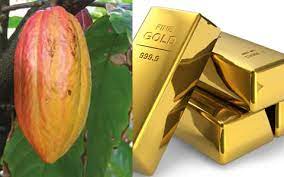1. Overview: Energy as a Growth Driver
The discovery of oil in 2007 marked a structural shift in Ghana’s economic framework. With production starting in 2010, petroleum has since become one of the country’s top three export earners alongside gold and cocoa.
Oil and gas revenues have strengthened public finances, attracted foreign direct investment (FDI), and enhanced Ghana’s regional energy influence.
2. The Macroeconomic Transformation
Between 2011 and 2013, oil production boosted Ghana’s GDP growth rate to record highs — 14.4% in 2011. The sector contributed around 5–7% of GDP and over 25% of export earnings by 2020.
This growth supported fiscal expansion, increased capital spending, and funded major infrastructure projects. The oil boom also accelerated Ghana’s classification as a lower-middle-income economy by the World Bank.
However, it also increased exposure to commodity price cycles — a vulnerability made evident during the 2014–2016 global oil price slump.
3. The Institutional Framework: Managing the Resource
Ghana’s regulatory framework is widely regarded as one of the more transparent in Africa.
Key policies and institutions include:
-
Petroleum Revenue Management Act (PRMA, 2011): Defines allocation of oil income to the budget, Stabilization Fund, and Heritage Fund.
-
GNPC (Ghana National Petroleum Corporation): Oversees national participation in exploration and development.
-
Public Interest and Accountability Committee (PIAC): Monitors and reports on oil revenue use.
-
Local Content Regulations (L.I. 2204, 2013): Prioritize Ghanaian participation in services, supply, and employment.
These frameworks have earned Ghana international recognition for good governance in resource management, though implementation gaps persist.
4. Sector Expansion: Oil and Gas Developments
Beyond Jubilee, Ghana now has two major producing fields — TEN and Sankofa-Gye Nyame — bringing total output to around 180,000 barrels per day at peak periods.
The gas sub-sector has also grown, with gas from the Atuabo Gas Processing Plant feeding thermal power plants at Aboadze and Kpone, reducing energy imports and improving energy security.
Upstream investments continue as exploration blocks attract global interest, though investor sentiment depends on stable policies and clear fiscal terms.
5. Challenges: Volatility and Fiscal Risk
While oil has boosted revenues, Ghana faces three persistent challenges:
-
Price Volatility: Global crude price swings disrupt fiscal planning.
-
Debt Pressure: Borrowing against future oil income increased public debt exposure.
-
Limited Value Addition: Most crude is exported; domestic refining and petrochemical development remain low.
Ghana’s experience underscores the importance of diversification — channeling oil income into productive sectors like manufacturing, agriculture, and infrastructure.
6. The Future: Energy Transition and Industrial Strategy
As global economies move toward decarbonization, Ghana’s strategy is shifting to balance hydrocarbon development with renewable energy investment.
The Energy Transition Framework (2022–2060) aims to gradually reduce carbon emissions while using gas as a “bridge fuel.” Meanwhile, the government’s Ghana Petroleum Hub Project seeks to position the country as a regional center for refining, storage, and petrochemical industries.
If successful, Ghana could create thousands of jobs and retain more value domestically rather than exporting crude.
7. Investment Outlook
The sector remains attractive to investors due to:
-
Political stability and robust legal frameworks.
-
Untapped exploration potential in deepwater basins.
-
Expanding regional gas demand within ECOWAS.
However, policy consistency, transparency, and local participation remain key to sustaining investor confidence.
8. Conclusion: From Discovery to Development
Oil and gas have undeniably altered Ghana’s economic landscape. From macroeconomic expansion to energy self-reliance, the sector has delivered both promise and pressure.
The next decade will test Ghana’s ability to convert resource wealth into inclusive growth — ensuring oil revenues power industry, innovation, and intergenerational prosperity.
FAQs
1. How much oil does Ghana produce daily?
Roughly 150,000–180,000 barrels per day, depending on field performance.
2. What percentage of Ghana’s GDP comes from oil?
Approximately 5–7% in recent years.
3. What are Ghana’s main oil-producing fields?
Jubilee, TEN, and Sankofa-Gye Nyame.
4. How is oil revenue managed?
Through the Petroleum Revenue Management Act (PRMA), which allocates funds to development and savings.
5. What is Ghana’s long-term energy goal?
To balance oil and gas with renewable energy while developing a regional petroleum hub.
Source: Accra Business News
Disclaimer: Some content on Accra Business News may be aggregated, summarized, or edited from third-party sources for informational purposes. Images and media are used under fair use or royalty-free licenses. Accra Business News, an extension of Accra Street Journal is a subsidiary of SamBoad Publishing Ltd under SamBoad Holdings Ltd, registered in Ghana since 2014.
For concerns or inquiries, please visit our Privacy Policy or Contact Page.
📢 GET FREE JOBS + TIPS
Others are getting instant job updates and career tips on our WhatsApp Channel. Why miss out?
📲 Join SamBoad Jobs Channel Now
















